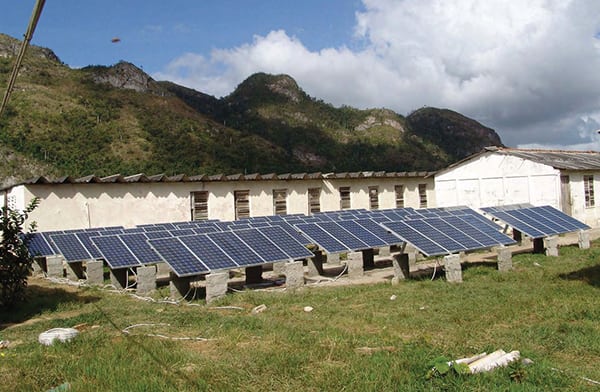Cuba Gives Green Light to PV Technology
Cuba is in the midst of a renewable revolution to transform, update, and adapt its fossil fuel–dependent power mix to its current energy needs.
Because Cuba has a relatively high solar potential (~ 5 kWh/m2/day), and it is feasible to adapt solar photovoltaic (PV) technology to rural areas, islands, and isolated communities, commercial interest in PV technologies has increased exponentially in the country over the past three years. According to an approved governmental strategy, about 700 MW of solar PV will be installed by 2030 with a total projected investment of $1 billion. Solar is poised to account for about 4% of total Cuban power generation (19,366 GWh in 2014, according to the International Energy Agency) by 2030.
The boom of solar PV technology in Cuba started in 2003 with the installation of small-scale PV systems to electrify schools and residences, medical facilities, and pumping stations located in isolated rural communities (Figure 7). A more ambitious program is being developed today to build modern PV plants near important cities and towns in order to supply reliable power directly to the grid. At the beginning of 2016, about 22 MW of solar PV capacity had been installed in Cuba, and the country is expected to add another 25 MW this year.
 |
|
7. Cuban revolution. Heightened interest in large-scale solar photovoltaic power could transform Cuba’s power mix. Courtesy: Amaury Perez Sanchez |
Several foreign firms and companies are involved in this program, such as Abu Dhabi Development Fund, Chinese aerospace firm AVIC, and the Spanish Agency of International Cooperation for Development. Cuban companies account for nearly 60% of the design and construction operations.
Most PV panels used in Cuban PV farms are assembled by state-owned company Empresa de Componentes Electrónicos Ernesto Che Guevara, located in Pinar del Rio Province in western Cuba, which has an annual production capacity of 15 MW. The most-used PV technologies are single- or multi-crystalline silicon, thin-film amorphous, and cadmium-telluride.
There are also other collateral PV projects under way, such as the installation of a 1.2-MW solar PV plant in a rum distillery, the construction and field evaluation of 23 solar-hybrid systems (mostly at universities, public buildings, and lighthouses), the erection of local PV microgrids, and the use of PV systems for water desalination.
The first grid-connected Cuban PV farm, a 2.6-MW project, was inaugurated in Cienfuegos province in 2013. The largest operating PV farm (at 3.6 MW) is also located in that province.
—Submitted by Amaury Perez Sanchez, adjunct professor, University of Camaguey